| |
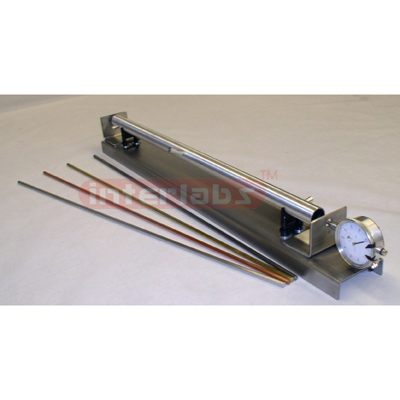 Click to Enlarge
Click to Enlarge
|
Linear Expansion Apparatus, Precision
Prove that metals expand when heated and measure their coefficient of expansion. This device is easy to set up, use and store. Because you can heat the rods with warm tap water, there is no danger of burns from steam. The high-contrast dial indicator (English-reading or metric) is sensitive to 1/100 mm. Includes: heavy duty stainless steel channel base; three nipples for water intake, water outlet and thermometer; and four rods (steel, aluminum, brass, copper). Instructions included.
See Enlarge
|
|
|
|
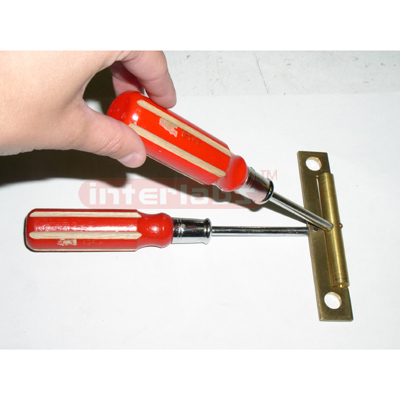 Click to Enlarge
Click to Enlarge
|
Bell Thermal Expansion
Because this demonstrates both linear and spherical expansion, it's an improvement upon the traditional version. Both the rod and gauge have wood handles for safety. At room temperature, the rod fits snugly inside the gauge's slot; both ends fit into either hole. When heated, the rod no longer fits in the slot and fits one - but not both - of the holes. With instructions.
See Enlarge
|
|
|
|
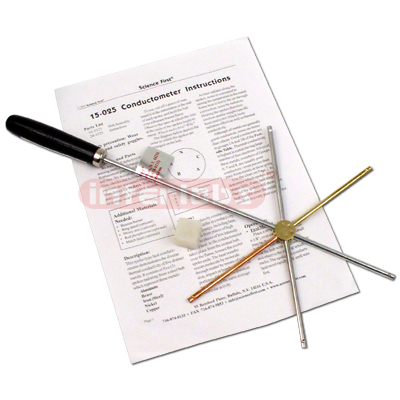 Click to Enlarge
Click to Enlarge
|
Conductometer with Wax
Heat transfers by conduction and materials differ in conductivity. This device demonstrates the diverse thermal conductivity of five distinct metals. Place small amounts of the included wax over each metal spoke. Heat the central hub over a Bunsen burner flame and watch the differing rates at which the wax melts. Includes: brass hub; five labeled metal spokes (aluminum, brass, steel, nickel and copper); wax; wood handle; instructions. You need safety gloves and goggles.
See Enlarge
|
|
|
|
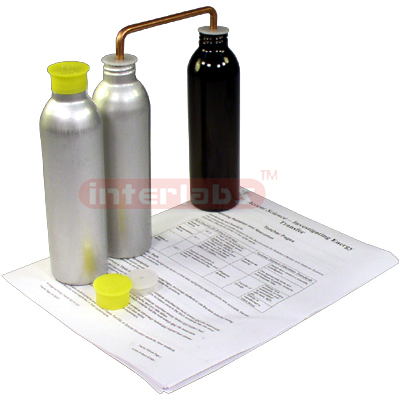 Click to Enlarge
Click to Enlarge
|
Accent Investigating EnergyAccent Investigating Energy
Study heat and light with the simplest of materials - a black can, a silver or white can and a connecting copper bar. Measure the temperature inside dark and shiny bright cans to determine the different ways light and heat are absorbed and radiated. Fill both cans with water - one with hot, one with cold - and connect them with the included energy transfer bar. Observe how the temperature of the water changes.
See Enlarge
|
|
|
|
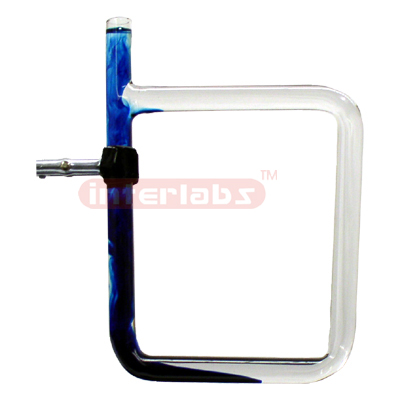 Click to Enlarge
Click to Enlarge
|
Liquid Convection Apparatus
This rectangular glass frame (19 x 24 cm) has an opening at the top for filling with water. When clamped upright and heated at the bottom corner, you can visualize the circulation of water in a hot water system. You need food coloring, heat source and stand.
See Enlarge
|
|
|
|
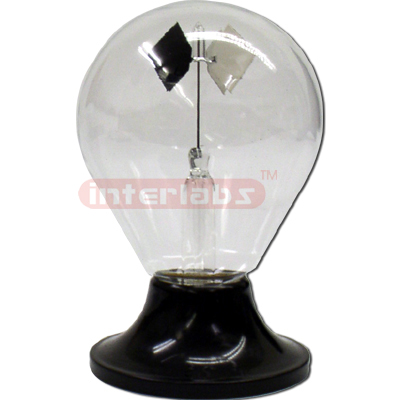 Click to Enlarge
Click to Enlarge
|
Radiometer
Convert light into motion and demonstrate radiant heat. This device has a rotating shaft supporting two vanes, mounted in an evacuated glass bulb. One side of each vane is black, the other shiny silver. High light levels cause the vanes to turn.
See Enlarge
|
|
|
|
 Click to Enlarge
Click to Enlarge
|
Heat Transfer Set
Explore the physics of heat transfer by filling one container with water at room temperature and the other with boiling water. Place a thermometer in each container to study heat lost and gained. Includes: two containers with lids; U-shaped copper transfer bar; instructions. You can replace the metal transfer bar with other items to examine different rates of transfer. Requires two thermometers.
See Enlarge
|
|
|
|
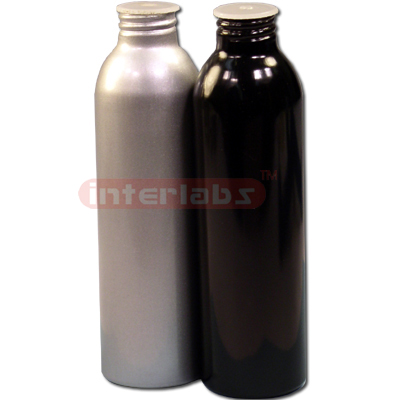 Click to Enlarge
Click to Enlarge
|
Radiation Can Set
Study how color affects the rate of absorbing and radiating energy. Includes black and silver or white metal cans with one-hole cap for inserting a thermometer. Comes with instructions. You need to supply a thermometer and heat source.
See Enlarge
|
|
|
|
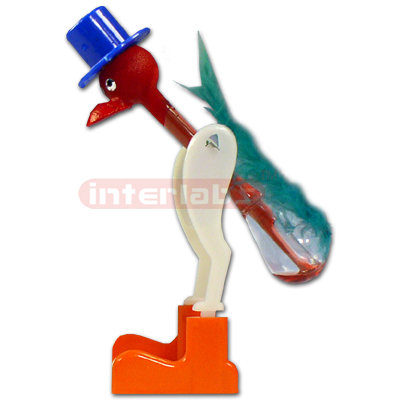 Click to Enlarge
Click to Enlarge
|
Drinking Bird
This famous novelty shows how water cools as it evaporates. Dunk the bird's head into water to start it bobbing. The "drinking" never stops.
Contains methylene chloride, MSDS available upon request.
See Enlarge
|
|
|
|
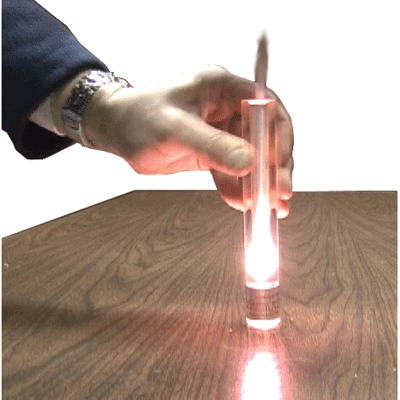 Click to Enlarge
Click to Enlarge
|
Fire Syringe
Here's an explosive demonstration of Boyle's Law. As air compresses, temperature increases, and paper bursts into flame. Create a tiny fire in the tube bottom, by inserting a small piece of tissue and pushing the plunger into the tube. As the air compresses inside, you'll see a quick burst of flame. Includes: aluminum piston, plastic piston chamber, and 2 custom O-rings.
See Enlarge
|
|
|
|
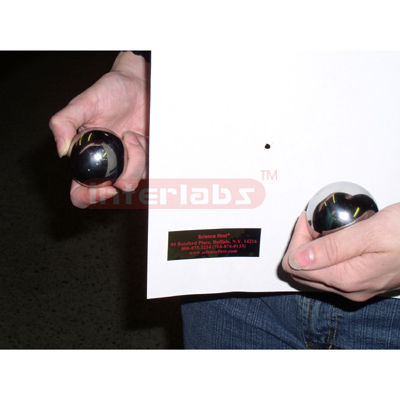 Click to Enlarge
Click to Enlarge
|
Energy Transformation Set
Bet you never knew converting mechanical energy to heat energy could be so entertaining. Merely striking our two precision machined balls together will create enough heat at the point of contact to burn a hole in a sheet of paper. You need: safety glasses and paper.
See Enlarge
|
|
|
|
 Click to Enlarge
Click to Enlarge
|
Steam Engine
This functioning steam engine can be a dramatic introduction for your energy conversion unit. Every step of the operating process can be seen with this visible working model - lighting the match, burning dry fuel, converting water to steam and steam to mechanical power. With built-in safety valve, fuel pellets and instructions.
See Enlarge
|
|
|
|
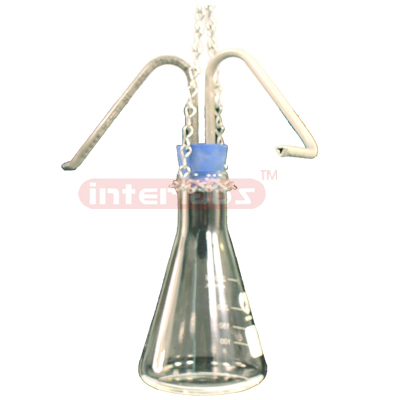 Click to Enlarge
Click to Enlarge
|
Hero's Engine
This little working model goes back to Hero of Alexandria in about 100 AD. It's an interesting example of Newton's Third Law. Water, when heated, causes steam to jet from nozzles, which makes the vessel rotate. Includes: flask, two opposing nozzles, suspension chain and instructions.
See Enlarge
|
|
|
|
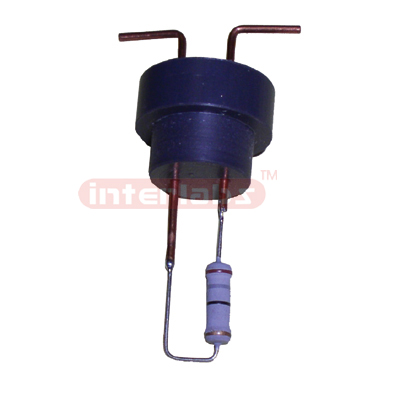 Click to Enlarge
Click to Enlarge
|
Calorimeter Resistor
Determine electrical equivalent of heat by passing a known current through a known resistance for a known time and measuring the resulting temperature change. Intended for use with our 612-1330 due to its low heat loss. Includes: power resistor mounted to cover, terminals, instructions.
See Enlarge
|
|
|
|
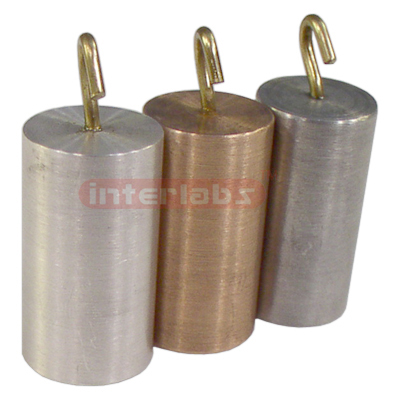 Click to Enlarge
Click to Enlarge
|
Specific Heat, Equal Volume
Our three specimens are designed to fit inside the core of a 612-1330 Dry Calorimeter or wherever you need specimens of uniform volume. Aluminum, zinc and copper specimens are 4 cm by 2 cm. Includes instructions.
See Enlarge
|
|
|
|







